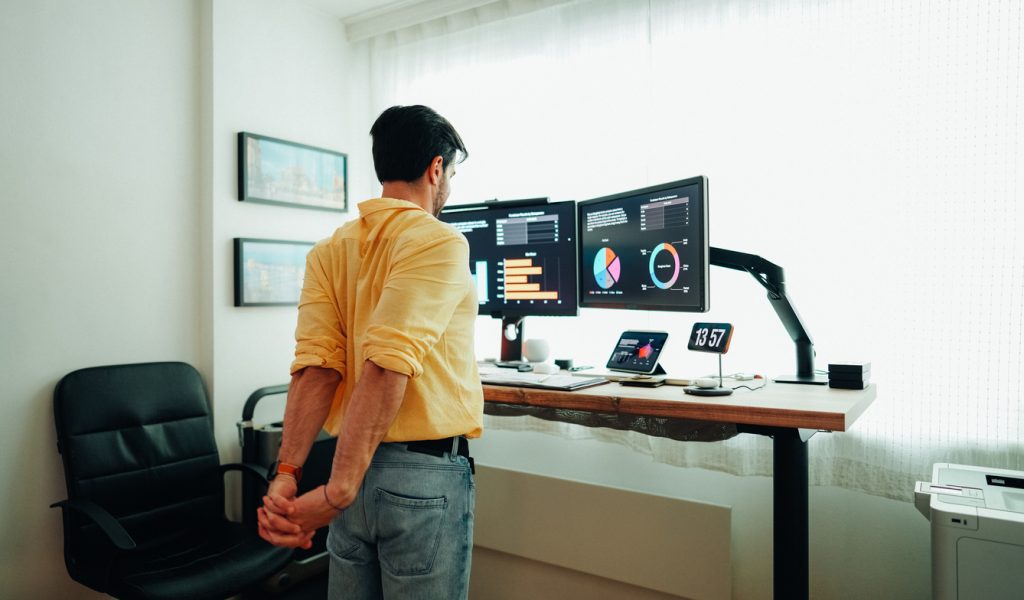Many of us spend hours at a desk each day. We sit for long periods of time staring at a computer screen or doing other work or school related tasks. Poor posture and slouching can weaken the muscles in the back and eventually cause pain. The following are ways in which poor posture affects the spine.
Tension and Pain in the Neck
Bad posture can negatively impact the alignment of the spine. Vertebrae that have shifted out of their normal position may compress a nerve, causing neck pain or pain that may radiate down the arm. Poor posture can strain the muscles and ligaments that support the neck. When the neck slants forward, the head ends up in front of the shoulders. Tension in the shoulders, neck, and upper body may cause painful spasms in the soft tissues, particularly the trapezius muscles. They start at the base of the neck and go across the shoulders to the middle of the back. Straining these muscles can result in decreased mobility in the neck, shoulders, and upper spine. Neck strain can also be a cause of headaches.
Low Back Pain

Unsupported sitting positions and a forward bend place stress on the lumbar spine, or low back. Lumbar strain may put stress on the discs, which are the flexible, fluid-filled structures that act as shock absorbers between the vertebrae. When discs become damaged due to injury, age, and other factors, they can cause pain, weakness, and nerve compression. A lumbar herniated disc can lead to pain that radiates down the leg and foot. Maintaining good posture when sitting and standing keeps the spine properly aligned and distributes weight more evenly.
Tips to Correct Poor Posture

- When posture is good, the vertebrae are correctly aligned; it’s important to sit with support. The spine should rest against the back of the chair with the head over the spine. Feet should be flat on the floor. If they don’t reach the floor, a footrest should be used. A small pillow can provide added support for the low back. Many desk chairs are adjustable, so try different positions to find the most comfortable.
- Get up and move around every hour. Walk around a little to get the circulation moving. Do some simple stretches to relax stiff muscles and maintain flexibility. Other benefits of moving around periodically are increased energy, better concentration, and enhanced productivity.
- Arrange your work space so that the computer monitor is at eye level. Having to look down places a great amount of stress on the neck. When writing or using a keyboard, the elbows should be bent at a 90 degree angle. Shoulders should be relaxed but not slumped.
- An adjustable height desk that can be raised to a standing position gives a much needed break from sitting. Many people have reported an improvement in back pain when they change positions during the day.
Next Steps
Sometimes neck and back pain resolves on its own, but some cases need treatment. The physicians at Atlanta Brain and Spine Care are ready to help you find relief. Our expertise is the diagnosis and treatment of spinal injuries and disorders. Contact us today to schedule an appointment.


